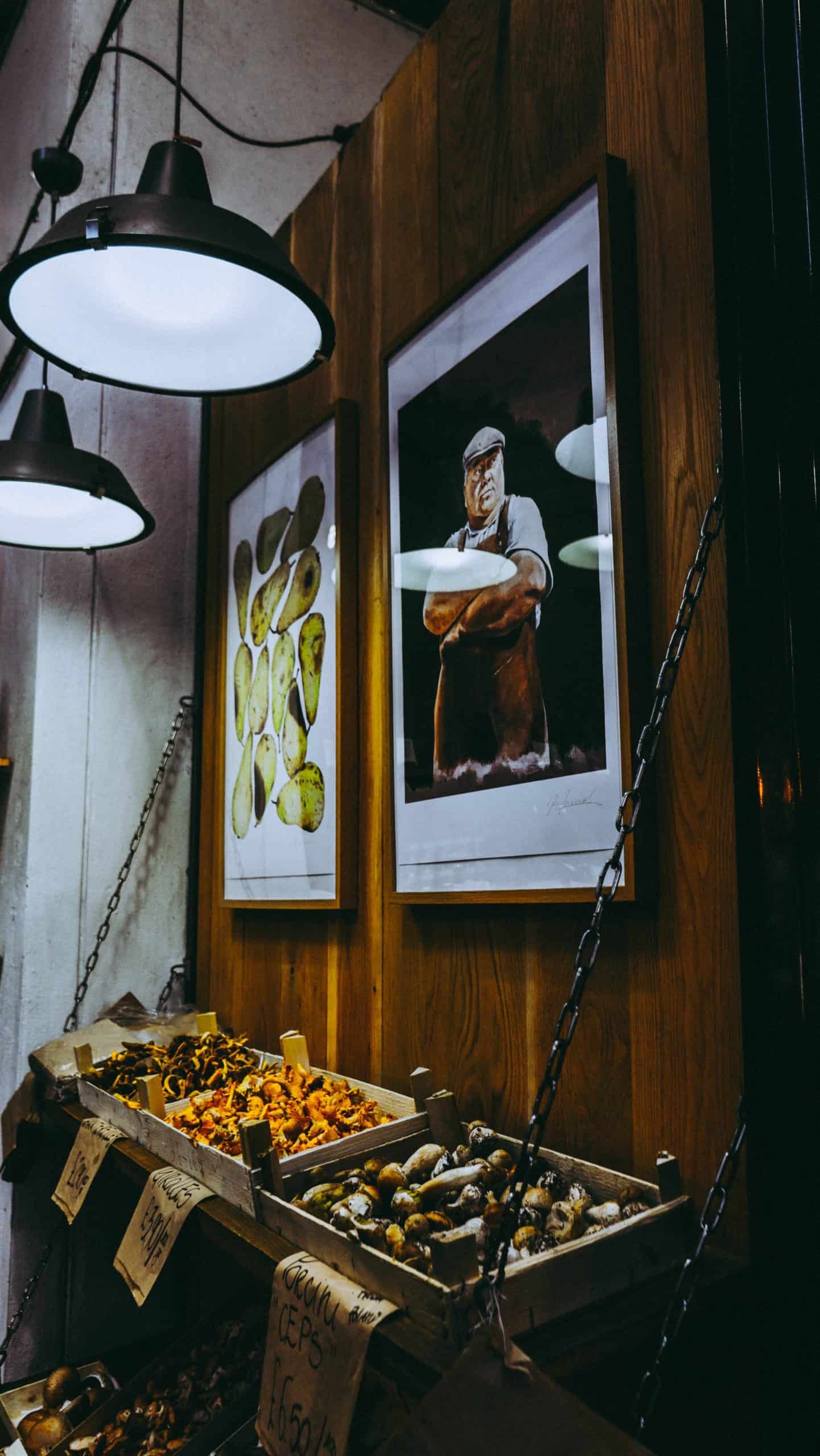10 Popular Grocery Store Mushrooms and Their Uses
Let’s face it. Most people are only familiar with the popular Portobello or button mushrooms they see at the grocery store. However, they fail to realize that there are various types of mushrooms waiting to be eaten and explored with different recipes.
While some fresh mushrooms are edible with nutty or sweet flavors, others taste like lobster, making them a great meat substitute. Others come in handy for medicinal purposes to lower blood pressure, boost immunity, diminish cholesterol levels, and alleviate cancer symptoms.
In this guide, we’ll walk you through the most popular grocery store mushrooms, how to use them, and much more. Read on!
1. Button
Also known as champignon, able, table, and cultivated mushrooms, button mushrooms have two color states; brown and white. Both are named differently. When a button mushroom is fully mature, it’s known as Portobello, whereas the white button is the immature variant and is white.
It’s also the subtlest-tasting and most common type of mushroom. 90% of the mushrooms we consume belong to this category. While you have free rein to eat button mushrooms raw, they are usually diced into bite-size chunks and used as pizza toppings, spaghetti sauces, and other dishes such as stews, salads, and soups. If you gravitate towards button mushrooms, you can save extra bucks by growing them indoors or in your backyard.
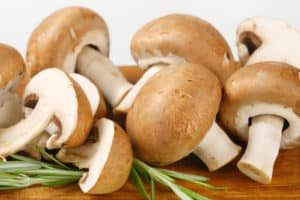
2. Cremini
Also known as Roman brown, Swiss brown, chestnut brown, immature and brown, and classic brown mushrooms, Cremini refers to a young Portobello mushroom. You can also find them at your local grocery store as a baby Portobello mushrooms and are closely similar to the white button species.
Therefore, it doesn’t come as a surprise that the Cremini mushroom and White Button mushrooms are interchangeable and can be used on pizza, soups, salad, and stew or consumed in their raw form.
Nevertheless, it’s worth noting that although white button mushrooms and Cremini mushroom varieties are similar in shape, they differ in size and color. While Cremini has a light shade of brown, white button mushrooms are darker and slightly bigger.
3. Portobello
Also known as Open Cap and Field mushrooms, Portobello has the same width as that of the palm of your hand. These species are denser in texture and have a bold flavor compared to other types of mushrooms.
In Italy, they’re used in pasta and sauces and make an excellent meat substitute. Furthermore, if you want the perfect substitute for a bread bun, the mushroom’s flat cap is your holy grail. The puffy caps are best suited for stuffing and grilling.
4. Shiitake
Also known as Black, Brown Oak, Golden Oak, Forest, Black Winter, Black Forest, Donko, and Chinese Black, Shiitake mushrooms go by different names. Predominantly grown in Korea, Japan, and China, it’s doesn’t come as a surprise that these species are a staple in most Asian cuisines. In the Japanese culture, Shiitake means ‘oak fungus.’ Nonetheless, most Shiitakes are cultivated in the US and other parts of the globe.
They have a subtle, woody aroma and flavor, whereas their dried counterparts are more intense. In addition, Shiitake mushrooms have a meaty and savory flavor, making them an ideal substitute in meat dishes for vegetarians and vegans. They infuse mouth-watering goodness into meat dishes such as sauces and soups.
5. Oyster
Also known as Abalone, Tree Oyster, Pleurotte, and Pleurotus, oyster mushrooms are typically found growing in the wild, on the sides of trees. Nowadays, they’re the most commonly cultivated edible mushrooms across the globe and readily available in nearly all grocery stores.
The King Trumpet mushroom is the largest of the oyster mushroom genus. These species are a breeze to cook and infuse a sweet yet subtle flavor into a boatload of sautéed or stir-fried dishes. Compared to other species, oyster mushrooms are consistently thin and therefore cook more evenly.
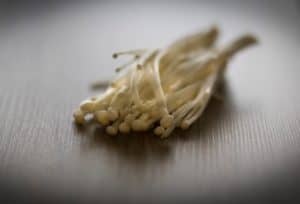
6. Enoki
Also known as Lily, Futu, Enokitake, Golden Needle, and Winter Fungus, Enoki mushrooms are available in most grocery stores, canned or fresh. We recommend eating fresh Enoki species with shiny, white, sturdy caps rather than the counterparts with brownish caps and slimy stalks.
These species are usually consumed raw and popularly used in a boatload of Asian cuisines. Due to their crisp nature, Enoki mushrooms blend well in salads and soups. Nonetheless, you can use them in other recipes. After all, the possibilities are endless.
7. Chanterelle
Also known as Egg, Golden, Girolle, and Yellow mushrooms, Chanterelle is the most popular wild species found in grocery stores. They are trumpet-shaped, orange, white, or yellow, and meaty. Given that cultivating them is no easy feat, they are typically foraged in the wild.
Additionally, Chanterelle mushrooms are popularly used in a boatload of European cuisines, including Austrian and French. They are also native to the United States.
While species have an earthy, woody aroma, others have a fruity or spicy one. When it comes to texture and flavor, Chanterelle mushrooms are delicate, making them best suited to be sautéed or fried in cream, olive oil, or butter.
Alternatively, you can pair them with eggs, as a starter topping, or on tomato bruschetta. They also go well in pasta, soufflés, soups, or cream sauces.
Black trumpet mushrooms are also known as Black Chanterelle, Trumpet of the Dead, or Horn of Plenty. They have a bold smoky flavor coupled with notes of black truffle mushroom when dried.
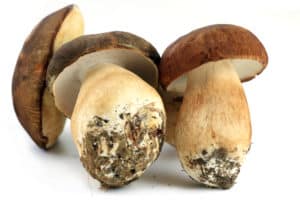
8. Porcini
Also known as King Bolete, Borowik, Penny Bun, Cèpe, and Polish, Porcini mushrooms are as meaty as their Portobello counterparts and popularly used in many Italian cuisines. Its flavor can be described as subtly meaty and nutty with a creamy, smooth texture coupled with a unique aroma reminiscent of sourdough.
While finding fresh Porcini can be an uphill task in the US, the dried options are easily reconstituted by soaking in hot water for 15 to 30 minutes before cooking. They’re ideal to be ground into pasta, risottos, and sautéed with butter to tap into the burst of flavor.
9. Shimeji
Also known as Bunapi Shimeji, these species are found in a multitude of grocery stores. However, they must be cooked due to the bitter taste when eaten raw. The bitterness turns into a pleasant nutty flavor when cooked. That makes Shimeji mushrooms perfect for stir-fries or sautéed sauces, soups, stews, and other dishes.
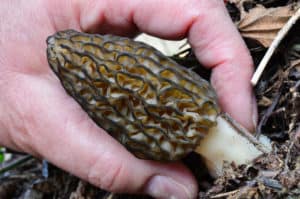
10. Morel
Also known as Morchella, these caps of these unique fungi closely resemble a honeycomb. Morel mushrooms are the go-to for gourmet cooks, especially in French cuisines, as their delicious, savory taste is unmatched.
Stemming from the challenges in cultivation, commercial harvesting of wild morels has soared into a million-dollar industry in Pakistan, North America, including the US, China, India, Turkey, and the Himalayas. In these regions, the highly-prized fungi are in abundance.
One of the most ideal and easiest ways to revel in Morel mushrooms and savor each bite is by mildly sautéing them in butter and seasoning them with pepper and salt. Although they are a tad bit chewy, morels have a burst of flavor that will have you hooked from the get-go. You can incorporate them in pasta fillings, soups or serve them on the side with poultry or fish.
11. Hedgehog
Also known as sweet tooth mushrooms, these species derive their name from the gills tucked away in their cap. They form spiky shapes that closely resemble a hedgehog. These mushrooms have a nutty, sweet flavor with a delightful crunchy texture when properly cooked. They can be simmered in stock or milk, sautéed, or pickled.
12. Chicken of the Woods
Scientifically referred to as Laetiporus, Chicken of the Woods directly translates to ‘with bright pores.’ These mushrooms grow in clusters, typically on the side of trees that are vibrant orange. Usually, they are deep orange right at the center and a lighter orange around the edges.
Chicken of the Woods also gets its name from the fact that a multitude of people believe it tastes like chicken, making it the perfect meat substitute for vegans looking to satisfy a craving. Furthermore, you can cook it in the boatload of ways that you would chicken.
13. Wood Blewit
Although these species are considered edible and are found in most grocery stores, they may trigger allergic reactions in some people. That’s particularly the case when consumed raw.
However, they can be an allergen even when cooked. Therefore, when giving it a try for the first time, we recommend starting with small quantities and observing how your body reacts.
While cultivated in France, the Netherlands, parts of the US, and the UK, Wood Blewit mushrooms can be found wild. They are best sautéed in a cream sauce or butter, added to a stew, or an omelet filling.
14. Lion’s Mane
These grow in shaggy clusters on the sides of trees and may resemble stalactite patterns that hang in the insides of caves. Lion’s Mane mushrooms are purported to elevate mood and increase concentration, support healthy brain function, boost immunity, and diminish inflammation in the body.
Contrary to most medicinal mushrooms, Lion’s Mane is edible. Its flavor is the perfect blend of sweet and savory, closely mimicking crab meat or lobster.
Conclusion
There’s a boatload of grocery store mushrooms and countless ways to cook them. Naturally, these are the most popular ones, with some being wild species and others cultivated. Nonetheless, all are incredibly tasty and versatile in the kitchen.

